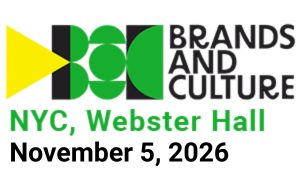Let’s start with how AI ‘thinks’ about culture. Culture is a complex adaptive system, interdependent with the actions and reactions people make to different prompts within it. Their reactions are coded based on their individual senses of identities (yes their plural identities, more on that later), their personal values, attitudes and beliefs and also their social influences, biases and constraints.
Just like a weather system where different pressures, temperatures and humidity in the system determine forecasts for different conditions occurring – a rainstorm, a heatwave or a cold spell. Likewise, if you understand the ground conditions relative to the weather system, you can also forecast whether there is a higher likelihood of flooding from a storm or wildfires from a heatwave – it’s all about understanding the relationships within the system. But unlike a weather system, culture reacts to conditions in seemingly unpredictable ways. People can say one thing, and then do the opposite. They sometimes appear to react disproportionately positively or negatively toward events. Reactions can escalate rapidly, trends can become huge phenomena, or simply be a burst of passing attention before vanishing again.
Until now, forecasting culture has relied on the perspectives of trendspotters or futurists and polling people’s opinions. Even with social platforms like Facebook, understanding culture has really been approached via A/B testing using stimulus to ‘learn’ what performs best.
But with Gen AI and Machine Learning, this is changing. Now, we have the ability to learn and adapt to what is shaping culture at a system level. For the first time, we can start to truly understand what makes people tick and how to influence it.
I wanted to share a couple of examples where AI can help brands become more culturally relevant…
Contextual Relevance
There’s a term called Pace layering, which in the cultural sense refers to things like fashion trends as fast culture and changing societal roles as slow culture, with the different elements in between making up the layers. For a brand it’s important to understand where your consumers’ heads are at when it comes to their cultural context. Here’s a couple of examples to illustrate:
The Spanish beer Estrella Damm just released a short film and ad called Verano’78. The creative work plays heavily on nostalgia and the insight that young people yearn to connect with the feelings of past cultural times. The cinematic treatment, soundtrack, and casting all bring out the richness and warmth of being young in the 70s. At the same time the story narrative, characters and attitude are equally attuned to being young today and, in turn, the feeling of what it feels to be young eternally.
Estrella could have as easily jumped on trends in the present day to garner relevance. But by connecting nostalgia with current culture, leveraging nostalgic cues along with modern values, they deepen the brand’s resonance with their consumer audience.
Meanwhile, Reiss recently produced a rapid response to a trending song on TikTok, with their ‘Guy in Finance’ flash dance video. It’s the opposite to the Estella example where they decided to tap into a truth about their aesthetic and the cultural cliche it represents to signal a relatable personality for the brand. While the goal here is viral reach, it begs the question if the fame game is the right play for the brand’s equity, or whether it risks devaluing the quality cues Reiss has spent years building in exchange for a short burst of attention.
To evaluate the best course for marketing scenarios like these, AI can be used to determine which approach to take and how to determine the right context to express. It helps us to understand the themes, trends and emotional responses that show what to focus on. Spotting the cadence, frequencies and emotional context that would take human analysis too long and/or prove too complex to define or predict.
Personal relevance
Our sense of individual identities is one of the areas where we have witnessed the greatest cultural liberation. We now have greater autonomy to be whoever we want to be and to choose from any number of versions.
The term Post Individualism is being given to how we see ourselves now. No longer just either a part of a collective society, or a unique individual, but both. A new word emerged within political movements in Barcelona recently; yosotros— a combination of “I” (”yo”) and “We” (”nosotros”) that represents the collective I, the singular We. And as our identities continue to become more multi-dimensional and nuanced brands need to do everything they can to relate to us personally and culturally.
L’Oreal’s beauty tech is a great example of this. It uses AI to provide increasingly sophisticated personalisation of its beauty products to consumers.
As the largest beauty company in the world, it’s a signal of how they are leading where others will follow: “Shifting from “beauty for all” to “beauty for each”, we address each individual’s unique needs, expectations, and beauty desires using our full arsenal of new technologies from AI and Gen-AI to machine learning. We leverage our two powerful engines — science and technology — to create inclusive, sustainable and advanced beauty experiences in increasingly personalised and bespoke ways.” Barbara Lavernos, Deputy CEO.
As a brand’s quest for cultural relevance shifts into the AI era, it’s important to understand the different building blocks that combine to generate relevance and how these new technologies can be embraced to elevate insight, enhance creativity, and respond to the increasing complexities in consumers’ lives.
Written by Clyde McKendrick, Brand Strategy Advisor and Co-founder of Ghost AI – a new generation of intelligence & ideation company.



